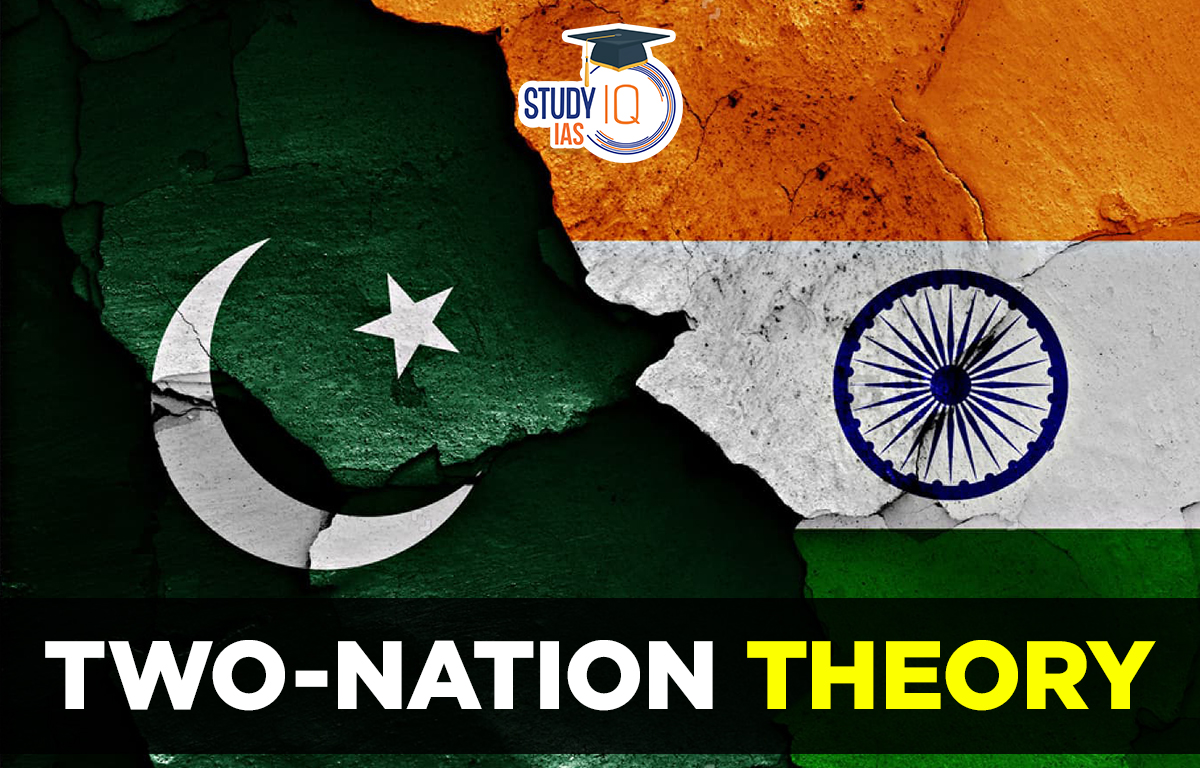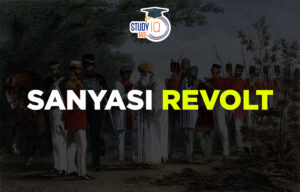Table of Contents
Two Nation Theory
Following its independence from the British Empire, the Indian subcontinent was heavily affected by the two-nation theory, a religious nationalism ideology. On June 3rd, 1947, the proposal to divide British India into two nations was made public. India and Pakistan would be these two nations.
From a social and moral standpoint, Muslims should be able to have their own homeland outside of India, which has a majority of Hindus, because Indian Muslims and Indian Hindus are two distinct countries with their own customs, faith, and traditions. Muhammad Ali Jinnah developed the viewpoint that an Indian Muslim’s nationality is determined by their faith. Learn everything there is to know about the Two Nations theory for the UPSC exams.
Read about: Indian Independence Act 1947
Two Nation Theory History
A distinct state for Muslims in the subcontinent was emphasised by the two-nation theory. History plainly demonstrates that Muslim nationalism developed after the arrival of Islam on the subcontinent because it was impossible for Muslims and Hindus to coexist without nationalism showing up.
Muslim scholars made an effort to maintain the purity of Islam in response to the Bhakti movement, Deen-e-Ilahi, and other similar philosophies that sought to incorporate Islam into Hinduism. The two-nation theory emerged after the British occupation of the subcontinent due to Hindu dominance, Muslim backwardness, and the danger to their existence, as well as sporadic clashes between Hindus and Muslims.
According to the idea, Muslims are a distinct nation with unique culture, heritage, values, and civilization. The Congress party favored maintaining India’s unity as a secular nation where all faiths are treated equally. However, the two-nation theory led to the division of British India and the creation of Pakistan and India as distinct countries.
The controversial Citizenship Amendment Act (CAA), which was approved in the Indian parliament later that year after more than 70 years, led to widespread protests across the nation. With one specific restriction: these refugees cannot be Muslims, the bill was approved to provide a route to citizenship for refugees who came to India from Bangladesh, Pakistan, and Afghanistan.
Read about: Mountbatten Plan
Two Nation Theory Feature
Sir Syed Ahmad Khan was regarded as the main architect of the Two Nation Theory because he used a novel figure of speech to convey the development of the Islamic identity. The Indian subcontinent was primarily impacted by the two-country hypothesis, a strict patriotism ideology, after it gained independence from the British Empire. The two-Nation Theory is a political theory that supports dividing India officially into Pakistan and India.
Sir Syed Ahmad Khan was regarded as the main architect of the Two-Nation theory because he used a novel figure of speech to convey the development of the Islamic identity. The Indian subcontinent was primarily impacted by the two-country hypothesis, a strict patriotism ideology, after it gained independence from the British Empire. The two-Nation Theory is a political theory that supports dividing India officially into Pakistan and India.
Read about: Direct Action Day
Two Nation Theory Impact
Bengal and the North Western Regions served as the birthplace of Muslim ministries. Having gained power through the different electorate framework, some Muslim pioneers have since begun to consider changing the beneficial separate electorate framework into a different patriot theory known as the two-country hypothesis, which claims that Muslims in India fundamentally changed the country in terms of its social, mental, and political makeup.
Sir Syed Ahmad Khan (1817–1898), who started the development of Muslim self-arousal and personality, was the first to articulate this idea. Sir Syed Ahmad forbade the Indian Muslim population from fading over to the Congress nationalist movement. He clarified that Indian Muslims put together their own nation and, for their own best interests, shouldn’t support Congress-driven movements for self-rule. His idea was well received by the early aristocrats, who needed allies to cope with the Congress-promoted development of Indian nationalism.
The Muslim League, which was doomed until 1929, gradually became the vehicle for Muslim governmental issues in Bengal and other Muslim majority regions after the congress’s non-co-activity of the Diarchy constitution at the common level alienated extensive Muslim political components from the patriot legislative issues of the Congress. At the Muslim League meeting in December 1930, writer and scholar Sir Muhammad Iqbal’s official position established the theoretical framework for the two-country hypothesis.
Read about: Interim Government
Two Nation Theory UPSC
When the Interim government and attempts at dialogue and negotiation with the Muslim League failed, the Congress agreed to the proposal for Pakistan. Even so, the Congress tried to persuade the British to hand over power to a united India, but it was unsuccessful in its efforts largely because it was unable to form a solid coalition with the Muslim League representatives.
India was divided into two dominions eventually as a result of unavoidable events. But this wasn’t the end of it all. Soon after the two regions gained independence from the British Empire in 1947, it was followed by a severe aftereffect of communal tensions that disturbed peace and stability.
Read about: Muslim League


 Maharashtra’s Mendrachi Vancharai Syst...
Maharashtra’s Mendrachi Vancharai Syst...
 Keeladi Excavation: Uncovering the Ancie...
Keeladi Excavation: Uncovering the Ancie...
 Sanyasi Revolt, Objectives, History, Rea...
Sanyasi Revolt, Objectives, History, Rea...





















